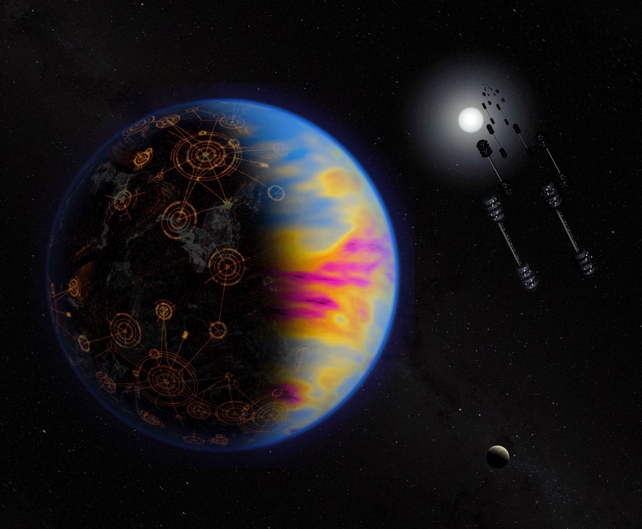Alien Civilizations May Be Too Advanced for Us to Detect
Since the Milky Way Galaxy is so old, and so large, one would think that intelligent civilizations would exist all over. So, where is everyone? A new piece of work claims that aliens might just be too intelligent to let us know that they are actually out there.
If extraterrestrials were to be looking at Earth carefully they would also be able to see the shimmer of sunlight on the solar panels. Scientists in the US turned this idea on its head to work out if we could also look for alien life in a similar vein.
It could and it placed the Earth-like alien planet in various levels of solar panel coverage and then asked an advanced telescope to try and see if it could detect that the panels from 30 LYs away.
What the results revealed was that yes, the telescope could identify them, but there are certain conditions on this. Approximately a quarter of the earth’s land surface needs to be coated with solar panels to make this method applicable while it would take hundreds of hours for the telescope to pick out the signal from noise.
Interestingly, this implies that, whereas identifying civilizations that are much more advanced than ours might be as difficult as identifying those that are not nearly advanced enough.

While no one has had to go through tense moments in anticipation of being abducted by aliens, astronomers look for extraterrestrial life today. This may involve seeking for biosignatures such as gas like methane in a planets’ environment or technosignatures such as signals.
In the most recent study, the presence of solar panels was considered as a technosignature because earlier studies suggested that they should reflect UV light and thus would be easy to identify. Solar energy also makes a lot of sense for a civilization’s power source because silicon and starlight are plentiful in the universe.
But the study showed that the efficiency of solar energy is nearly perfect to be used as a sign of technosignatures.
In the following step, the researchers figured out how much ground on the Earth would be necessary to install solar panels to satisfy the world’s energy needs based on the data of 2022. In the case of students’ mobile learning, they detected that the internet only facilitates 2. This indicates that a minimum of 4 percent land coverage would be needed; this is if solar was the only energy source.
Still, with a view to the number of people on Earth peaking at 10 billion according to United Nations, the land coverage will only jump to 3 percent. Even if PC is to reach thirty billion with high standard of living, the portion of land utilized would still not go over 8. 9 % .
Since there is no logical reason to place 23 percent of the landmass of a planet with solar panels, the study opines that there is no way of identifying aliens in this manner.
This discovery carries a huge sci-fi impact for the Fermi Paradox as to why we haven’t seen signs of alien life despite the fact that somewhere out there it should exist.
This may be due to the fact that Earth is located in a part of the galaxy sufficiently quiet or our search is insufficient or technologically constrained or we are intentionally being left alone. The most disturbing is that we are alone in the universe On no occasion are we able to communicate interstellar civilizations.
The new study introduces another idea:The new study introduces another idea:
‘That means there is no absolute need to conquer the galaxy because civilizations could reach a sustainable population and energy density even with a high standard of living,’ explained Ravi Kopparapu, the lead author of the study and a planetary scientist at the Goddard Space Flight Center in Maryland.
They certainly may grow within their own stellar system, or the systems of nearby stars, although there can be no galactic empires.
This perspective also dispels concepts such as Dyson Spheres which are large structures of solar panels around stars which some scientists considered as a possible cause of Tabby’s Star mysterious dimming.
‘Maybe large scale stellar-energy harvesting structures should be considered as archaic in light of improvements,’ notes Vincent Kofman, a geochemist with the NASA Goddard Space Flight Center.
Any society capable of constructing these gargantuan structures in space would most probably have nuclear fusion or other forms of space efficient power sources.
The study was published in The Astrophysical Journal.
Do not forget to share your opinion with us to provide you with the best posts !




0 Comments